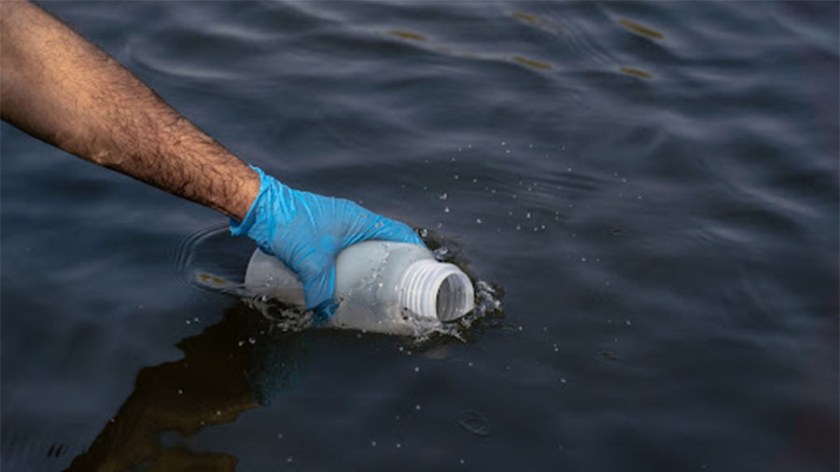Guest blog post by Nico Fassbender, Zoleka Filander, Carlos Moura, Paris Stefanoudis and Lucy Woodall
“We cannot protect something we do not love, we cannot love what we do not know, and we cannot know what we do not see.”
These compelling words by author Richard Louv perfectly describe the importance of taxonomy in today’s conservation efforts.

The deep ocean is the last frontier on our planet. It is home to creatures beyond our imagination and filled to the brim with life. Coastal communities have known the value of a healthy ocean for centuries, yet much of its life remains unknown, sitting beyond the reach of most research programs due to the hostility of its depth and vastness.
More recently, the importance of deeper ecosystems started moving into the focus of modern marine research as many scientists across the globe are now working to unriddle the mysteries and processes that drive the patterns of life down in the deep.
Deeper reef habitats, starting at ~30m depth beyond SCUBA diving limits, are of crucial importance for coastal communities and adjacent ecosystems alike. They have been found to not only support coral and fish larval supply, aiding shallower reefs, but also to act as a refuge for many species in times of disturbance. Yet, going back to the start of this post – you cannot protect what you don’t know – and we currently know very little about these deeper reefs, especially ones in the Western Indian Ocean region.
We are many nations, but together we are one ocean.
Zoleka Filander – Department of Forestry, Fisheries and Environment, Branch Oceans and Coasts, Cape Town, South Africa
With current research and monitoring activities in the region mostly focussing on shallow reefs, our Field Identification Guide, published in the peer-reviewed, open-access Biodiversity Data Journal, aims to showcase the benthic organisms that inhabit the Seychelles’ deeper reefscapes. The research cruise that gathered the imagery data used to create the guide, Nekton’s “First Descent: Seychelles Expedition”, was the first of its kind to systematically survey deeper reefs in Seychelles waters, bringing to light previously little-known ecosystems and their inhabitants.
All species play relevant roles in trophic relations, in the functioning of ecosystems, and all have a potential biotechnological interest.
Carlos Moura – OKEANOS/DOP, University of the Azores, Horta, Portugal

Our Field Identification Guide is one of the first efforts to describe the mesophotic and sub-mesophotic reefs in the Western Indian Ocean. To effectively protect these ecosystems, stakeholders need to be able to visualise them and scientists need to be able to identify and classify the organisms they observe. Displaying the diversity of the benthic organisms we encountered is only the first step in a complex and long process, allowing us to categorize, study, monitor and thus effectively protect these habitats.
The correct identification of life is a fundamental building block of ecological knowledge. This international collaboration provided an important place to start from when considering the life on deeper reefs in Seychelles and the wider Western Indian Ocean region.
Lucy Woodall – University of Oxford, and Nekton
To survey the benthic flora and fauna of the Seychelles, we used a variety of methods, including submersibles, remotely operated vehicles and SCUBA diving teams equipped with stereo-video camera systems. We then recorded benthic communities during transect surveys conducted at 10 m, 30 m, 60 m, 120 m, 250 m and 350 m depths. This way, we ended up with 45 h of video footage and enough images to be able to present a photographic guide for the visual identification of the marine macrophytes, corals, sponges and other common invertebrates that inhabit Seychelles’ reefs.
We encountered coral fan gardens on steep slopes, boulders entirely encrusted with sponges of all colours and textures, corals of all shapes and sizes, and an amazing variety of critters. The images in our guide cannot do justice to the beauty of these habitats, and more than one tear was shed encountering these intact ecosystems teeming with life. Especially in times of increasingly frequent disturbance events and quickly shifting baselines (i.e., what we would see as a pristine, healthy reef in the 21st century), intact reef systems become increasingly rare. So much so that they are often confined to extremely remote and/or long and heavily protected areas. Finding these deeper reefs intact and with little to no signs of anthropogenic disturbance means hope – hope that there are yet undiscovered and unexplored reefs in the Western Indian Ocean region that show similar traits; and hope that we will discover even more novel habitats worth protecting.

We hope that this guide will help the public to discover the beauty of Seychelles’ deeper reefs and aid current and future monitoring and research activities in Seychelles and the Western Indian Ocean region.
Currently, there are few formalised training materials available to new marine researchers working in mesophotic and deeper reef habitats, especially for the Indian Ocean. The present benthic field ID guide will hopefully be of use to marine researchers, managers, divers and naturalists with the identification of organisms as seen in marine imagery or live in the field.
Paris Stefanoudis – University of Oxford, and Nekton
Taxonomic paper:
Fassbender N, Stefanoudis PV, Filander ZN, Gendron G, Mah CL, Mattio L, Mortimer JA, Moura CJ, Samaai T, Samimi-Namin K, Wagner D, Walton R, Woodall LC (2021) Reef benthos of Seychelles – A field guide. Biodiversity Data Journal 9: e65970. https://doi.org/10.3897/BDJ.9.e65970













